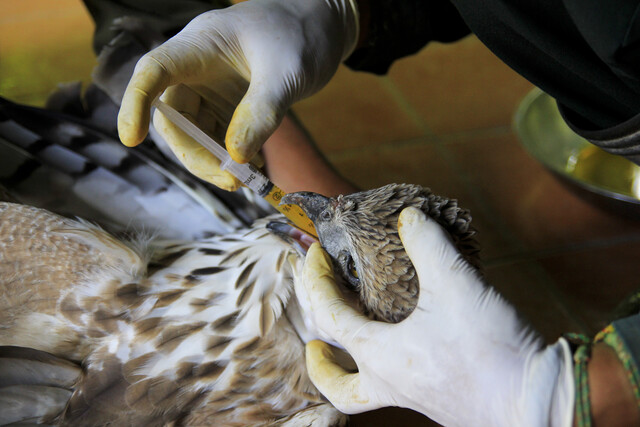Online Class: Butterflies

no certificate
with CEU Certificate*
-
10Lessons
-
16Exams &
Assignments -
228Students
have taken this course -
2Hours
average time -
0.2CEUs
Course Description
Welcome to the amazing world of butterflies! Most of us have seen butterflies in our backyard, and admired them, but many of us don't know much about them. In this course on Butterflies, we'll introduce students into the fascinating world of the butterfly. Students will learn the basics regarding butterfly anatomy, including how a butterfly flies. Understanding the lifecycle of butterflies, from egg to adult, is a fascinating metamorphosis, one of the most unique found in nature.
Throughout this course, students will learn about different types of butterflies, the difference between a moth and a butterfly, and how butterflies are classified in families and species. Butterfly habitats are as diverse as the types and colors of butterflies in our environment, and students will learn about butterfly habitats, their favorite plants and flowers found in their own backyard to those that populate certain geographical regions. In addition to learning about butterfly habitats, students will learn the basics regarding the raising of butterflies based on region, as well as the type of equipment you may need to properly capture and care for your butterflies.
This course will also focus on butterfly taxonomy and etymology, further exploring the classification of butterflies according to behaviors, species, and habitats, as well as how butterflies got their name. We'll explore some fun and interesting facts about butterflies, as well as more serious topics such as the importance of butterflies in numerous cultures throughout the world, based myths, legends, art and history.
Finally, we'll conclude the course would an explanation of exactly what butterflies do (other than look pretty) in our environment, the food chain, and in the propagation and pollination of plants.
- Completely Online
- Self-Paced
- Printable Lessons
- Full HD Video

- 6 Months to Complete
- 24/7 Availability
- Start Anytime
- PC & Mac Compatible
- Android & iOS Friendly
- Accredited CEUs

Course Lessons
Lesson 1. Transformative Journeys: Butterflies in Nature and Culture
Butterflies serve as ecological barometers, reflecting the health of our environment while enriching the literary and cultural landscapes with their symbolism of change and beauty. Their remarkable survival strategies, such as sequestering toxins and polymorphism, underscore their evolutionary ingenuity and ecological significance.Lesson 2. Cycle of Change: The Butterfly's Journey
Butterflies, transcending through their four-stage life cycle from egg to adult, embody the marvels of metamorphosis, reflecting nature's artistry and resilience. These delicate creatures, crucial in pollinating plants, remind us of our role in preserving biodiversity and appreciating life's continual changes.Lesson 3. Fluttering Jewels: Unveiling the Secrets of Butterfly Diversity
From skippers to swallowtails, butterflies boast over 20,000 species globally, each offering unique contributions to ecosystems through adaptations that enchant scientists and nature enthusiasts alike. Their vital engagements in pollination and environmental health underscore their significance beyond mere visual appeal.Lesson 4. The Intricate Dance of Butterflies: Habitats, Diets, and the Art of Migration
Triumphant conservation stories highlight habitat restoration and educational outreach, pivotal strategies in reversing butterfly population declines. These initiatives highlight the interconnectedness of ecosystems, as butterflies signify environmental health and contribute significantly to pollination and food webs.Lesson 5. Understanding Butterfly Taxonomy
Carl Linnaeus pioneered modern taxonomy, enabling precision in naming and categorizing species, including butterflies. Their stunning diversity and adaptations reveal evolution’s mastery and the necessity of ecological preservation.Lesson 6. Butterfly Habitats: Crafting Your Own Nature Sanctuary
Witnessing the enchanting lifecycle of butterflies, from egg to adult, offers a unique, hands-on insight into nature's transformative processes and fosters biodiversity appreciation. Creating optimal habitats based on geographic considerations and tailored care practices ensures successful butterfly nurturing for enthusiasts of all skill levels.Lesson 7. Butterfly: A Journey of Language and Symbolism
In Mexican culture, butterflies are perceived as the souls of ancestors, prominently featured during the Day of the Dead, whereas in Celtic tradition, they are seen as spiritual guides. Universally, butterflies symbolize transformation, inspiring personal change and artistic beauty, a testament to their profound symbolic weight.Lesson 8. Butterfly Wonders: Beauty, Behavior, and Biology
With species numbering over 17,500, butterflies enchant us with their kaleidoscope of colors and behaviors, embodying themes of transformation and ecological balance. Their sensitive nature often reflects the well-being of the ecosystems they inhabit.Lesson 9. Butterfly Symbolism: A Cross-Cultural Exploration
Butterflies journey through history as emblems of metamorphosis, influencing art and culture from ancient myths to modern interpretations. Their presence in various civilizations highlights themes of beauty, spiritual rebirth, and the ephemeral nature of life.Lesson 10. Beyond Beauty: The Ecological Impact of Butterflies
As butterfly caterpillars prune plant growth and facilitate nutrient cycles, their vibrant adult forms continue to enhance biodiversity through pollination. They also serve as prey, creating links across trophic levels that highlight their complex ecological roles and necessitate protective measures.
Learning Outcomes
- Define the three main body parts of a butterfly and describe their specific functions.
- Identify and illustrate the stages of a butterfly's life cycle and explain the significance of each stage.
- Identify the ecological roles and adaptations of butterflies, including their contributions as pollinators and their use of camouflage and mimicry for defense.
- Define the four distinct stages in the life cycle of a butterfly, from egg to adult, highlighting key transformations and functions in each stage.
- Identify adaptive strategies of butterflies, including mimicry and camouflage, that aid in survival and ecological balance.
- Recognize the classification features and ecological roles of various butterfly families such as Skippers, Brush-footed, and Swallowtails.
- Describe the migratory patterns of monarch butterflies, detailing how they navigate vast distances and the environmental factors influencing their migration.
- Identify the various ecological regions that serve as butterfly habitats, explaining the key characteristics that support specific butterfly species.
- Define the hierarchical structure of butterfly taxonomy by accurately listing and describing each taxonomic rank within Lepidoptera.
- Identify and analyze the role of modern technologies like DNA sequencing and AI in advancing the classification and understanding of butterfly species.
- Describe the process of building a butterfly-friendly habitat, focusing on the selection of plants, environment setup, and maintenance required to support butterfly life cycles.
- Identify the geographic conditions necessary for specific butterfly species to thrive and detail the relationship with their host plants.
- Define the linguistic and cultural significance of the word 'butterfly' by identifying at least three cultural interpretations across different societies.
- Demonstrate mastery of lesson content at levels of 70% or higher.
Additional Course Information

- Document Your Lifelong Learning Achievements
- Earn an Official Certificate Documenting Course Hours and CEUs
- Verify Your Certificate with a Unique Serial Number Online
- View and Share Your Certificate Online or Download/Print as PDF
- Display Your Certificate on Your Resume and Promote Your Achievements Using Social Media

Choose Your Subscription Plan
No Certificate / No CEUs
This course only
| Includes certificate | X |
| Includes CEUs | X |
| Self-paced |

|
| Instructor support |

|
| Time to complete | 6 months |
| No. of courses | 1 course |
Certificate & CEUs
This course only
| Includes certificate |

|
| Includes CEUs |

|
| Self-paced |

|
| Instructor support |

|
| Time to complete | 6 months |
| No. of courses | 1 course |
Certificates & CEUs
Includes all 600+ courses
| Includes certificate |

|
| Includes CEUs |

|
| Self-paced |

|
| Instructor support |

|
| Time to complete | 12 Months |
| No. of courses | 600+ |
Certificates & CEUs
Includes all 600+ courses
| Includes certificate |

|
| Includes CEUs |

|
| Self-paced |

|
| Instructor support |

|
| Time to complete | 24 Months |
| No. of courses | 600+ |
Student Testimonials
- "She was wonderful always available and results back quickly." -- Joann H.







